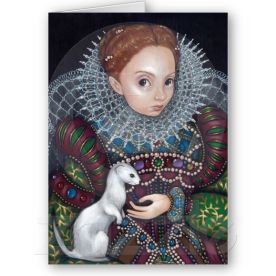Animal Symbolism
in Tudor Times
see also : Click EasyEdit to add to this page! (Don't see the EasyEdit button above? <a href="/#signin" target="_self">Sign in</a> or <a href="/accountnew" target="_self">Sign up</a>.) | | "In a largely illiterate age, visual culture was loaded with political symbolism. Coats of arms and badges... were easily identifiable, a stamp of authority. Pinned to jackets, embroidered on banners, carved and moulded into buildings, and painted on shields and manuscripts, they quickly became associated with a particular family through simple repetition." - Thomas Penn (The Guardian)
Noblemen and Royalty would usually pick a particular animal symbol to denote certain attributes which were used for heraldic purposes. Also 16th Century portraits were often painted with animals as visual clues to the identity and personality of the sitter depicted, for instance, squirrels were symbolic of obedience and personal restraint and Dogs represent faithfulness. | | Symbol | Animal | Meaning | Chosen by |
| Bear | Strength, cunning, ferocity in the protection of one's kindred | William Brereton |
| Bull | Valour, bravery, generosity | Thomas Boleyn |
| Falcon (Hawk) | One who does not rest until objective achieved | Anne Boleyn
Elizabeth I |
| Hare | One who enjoys a peaceable and retired life | Anne Boleyn |
| Leopard | Valiant and hardy warrior who enterprises hazardous things by force and courage | Anne Boleyn |
| Lion | Dauntless courage | King Henry VIII |
| Panther | Fierce, but tender and loving to children and will defend her children with her life | Jane Seymour |
| Pelican | Self-sacrifice and charitable nature; When feeding her young ("in her piety"), symbolizes the duties of a parent or parental love | Elizabeth I |
| Phoenix | Symbol of resurrection | Jane Seymour |
| Snake | Wisdom | Elizabeth i |
| Swan | Purity
it was also symbol of her family because she descended from a knight also called "Knght of Swan" | Anne of Cleves | |
| King Henry VIII |
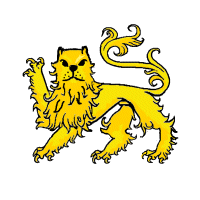
Symbol: Lion
The Lion is the emblem of England. It is now, on badges, actually a "lion passant gardant" - a walking lion, looking out at you full face, and was first used by Rollo, Duke of Normandy (father of William the Conqueror, who added the second lion to the Royal Coat of Arms for England.) The third was added by Henry II, and Henry VIII added a crown to the lion. |
Queen Jane Seymour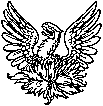 Symbols: Symbols: Phoenix, Panther A phoenix is a mythological bird which never dies but, after 500 years, is consumed by fire and born again, making it a symbol of the Resurrection, endurance and eternal life. 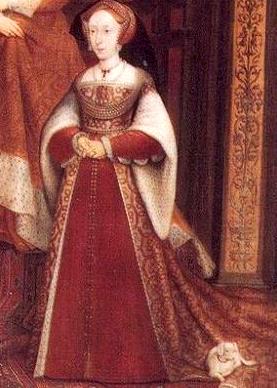 Symbol: Dog Symbol: DogAlthough Jane Seymour had pet dogs, this would have had the double meaning of showing her faithfulness
| Queen Anne Boleyn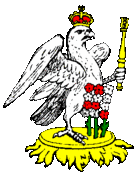
Symbols: Falcon, hare, leopard The falcon or hawk signifies someone who is hot or eager in the pursuit of an object much desired. It is frequently found in the coats of arms of nobility from the time when the falcon played an important social role in the sport of kings and nobles. It is found as a heraldic bearing as early as the reign of King Edward II of England. It was also later adopted by her daughter Queen Elizabeth I.
See also : Falconry in the Tudors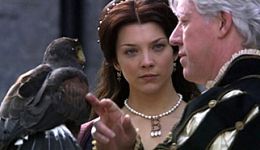 |
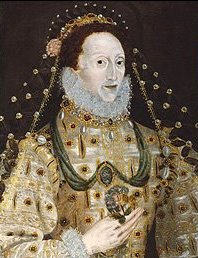
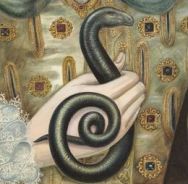
[source : <a class="external" href="http://news.bbc.co.uk/2/hi/entertainment/arts_and_culture/8550119.stm" rel="nofollow" target="_blank" title="BBC news March 2010">BBC news March 2010</a>]
Symbol: Snake
Elizabeth depicted with the snake clasped in her fingers in an original version of the work, but it was replaced with a bunch of roses. The Snake is thought to denote wisdom but it is not really known for certain why Elizabeth was painted with the serpent in her hand.
Dr Tarnya Cooper says: 'The recent technical analysis on these remarkable portraits has been critical to our understanding of Tudor painting. The portrait of Elizabeth I with a hidden serpent is a really unusual survival. Yet, it is difficult to know exactly why the serpent may have been originally included, or how common this motif might have been. The queen certainly owned jewelry and costume including emblems of serpents, which were probably understood as a symbol of wisdom. However no other portrait of Elizabeth appears to depict her holding a snake. The current condition of the picture has meant it has not been on display for decades, and this display provides an exciting opportunity to present it to the public alongside other key portraits.'
| 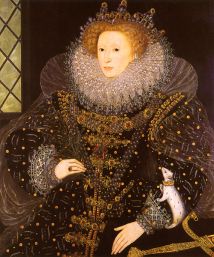
Symbol: The ermine is an animal of the weasel family prized for its tail of pure white fur with a black tip. According to legend the ermine would rather die than soil its pure white coat and it came to stand for purity. It features in many of Elizabeth's portraits, where it also functions as a status symbol, as wearing ermine was restricted to royalty and high nobility. The ermine was also the symbol of the Dukes of Brittany, and the Breton flag represents black spots on a white background in imitation of its fur. 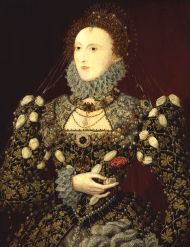 Symbol : Phoenix Symbol : Phoenix(see Jane Seymour above) |
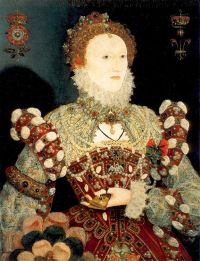 Symbol: Pelican emblem Symbol: Pelican emblema number of devices are used to communicate messages about Elizabeth, including pearls (purity), the Tudor rose (unity) and the pelican pendant pinned on her chest (love). The pelican brought with it a whole host of associations that Elizabeth adopted for herself and it became one of her favourite symbols. Mother pelicans were believed to pluck their own breasts to feed their starving young, often dying in the process (a legend which originated in misunderstanding of their grooming habits). During the Middle Ages the pelican was seen as symbol of Christ's sacrifice, dying on the cross to save mankind. This potent symbol of self-sacrifice and motherly love was co-opted by Elizabeth. It was used to represent her as 'mother' of her Protestant nation and to signify her commitment to her subjects.
| |
